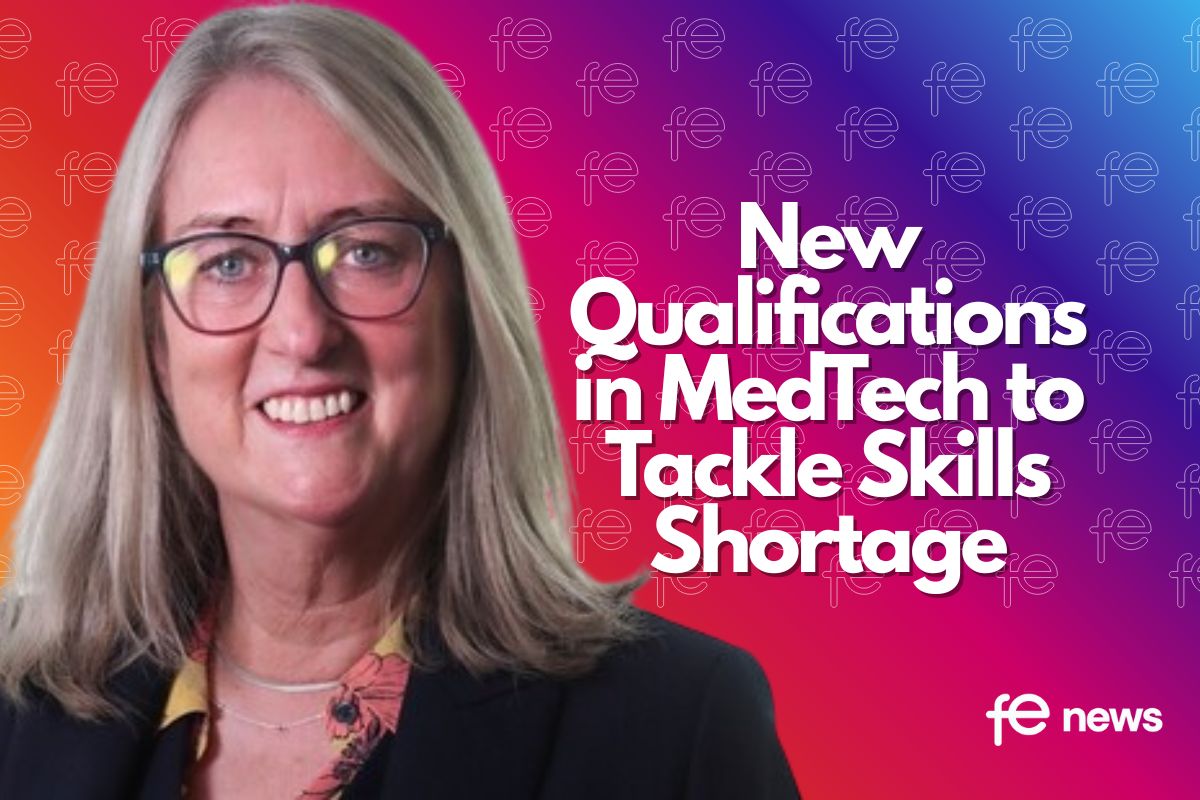Disadvantaged sixth form and college students are three whole A level grades behind their more affluent peers

New @EduPolicyInst study reveals the disadvantage gap in sixth forms and colleges
A new report by the Education Policy Institute (EPI), “Measuring the disadvantage gap in 16-19 education ” funded by the Nuffield Foundation, finds that poorer students in sixth forms and colleges trail their more affluent peers by as many as three A level grades when taking qualifications at this level.
- This significant gap in attainment is largely explained by poorer students already having lower grades at the end of their GCSEs. By the time they then start in sixth form or college, they are already trailing their more affluent peers.
- Disadvantaged students then fall even further behind through sixth form and college, leaving them around half an A level grade behind better off students with the same GCSE results.
These new findings from EPI’s exploratory research have significant implications for social mobility, and strengthen the case for additional funding targeted at disadvantaged 16–19-year-olds, particularly following the severe disruption to learning caused by the pandemic.
The new study finds that the disadvantage gap – the gap in educational attainment between poorer students and their peers – is substantial during the 16-19 education phase, with poorer students continuing to see far worse educational outcomes than their better off peers.
To date, most existing research on the disadvantage gap in education has focused almost entirely on the outcomes of pupils at secondary school level and below. There has been very little understanding of what the gap is after this age, for those older students enrolling in sixth form or college.
In the first ever study to measure the education ‘disadvantage gap’ amongst sixth form and college students, provisional findings show that across all qualification types, poorer students are the equivalent of three whole A level grades behind their better off peers.
The EPI research, which is based on an entirely new, provisional methodology, brings into sharp focus the extent of educational inequality among older students at this critical period in their lives, just as they enter adulthood.
The disadvantage gap at this education phase is found to vary considerably across the country: poorer students are the equivalent of five whole A level grades behind their more affluent peers in Knowsley, North Somerset and Stockton-on-Tees, while in many London areas poorer students are level with, or even ahead of, their more affluent peers.
The 16-19 education phase includes students in England in sixth forms and colleges, and covers students taking qualifications including A levels, and vocational, technical and lower-level qualifications.
With poorer students shown to face further attainment losses at this phase, on top of those previously experienced in school, the new findings also provide evidence for the need for new interventions aimed at reducing the gap in 16-19 education.
To prevent disadvantaged sixth form and college students from falling further behind, researchers determine that there is a strong case for additional government funding for 16-19 education.
This targeted funding is urgently needed to address learning losses caused by the pandemic, which are likely to disproportionately impact the poorest, and will have likely exacerbated the already large disadvantage gap among students at this stage of education.
Key findings
The disadvantage gap in sixth forms and colleges
Based on a new, exploratory analysis of the disadvantage gap at this phase, the research finds that:
- There is a large gap in attainment, equivalent to almost three A level grades, when comparing (on average) the best three qualifications of disadvantaged students (those who had claimed free school meals in secondary school) and the best three qualifications of their non-disadvantaged peers.
- For the very poorest sixth form and college students – those classed as “persistently disadvantaged” – who were on free school meals for over 80% of their time at school – the gap is even wider, equivalent to four A level grades.
- There was no progress in closing the 16-19 gap between 2017 to 2019 and this is likely to now be worsened by the unequal impact of the pandemic on learning loss, along with the very different approaches to assessments seen in academic and vocational qualifications during 2020.
Which factors explain the disadvantage gap at sixth form and college level?
When exploring the contribution of different factors to the large gap at this phase, the research finds that:
- A large proportion of the gap (39%) at the 16-19 education phase can be explained by students’ prior attainment at school (GCSE). Poorer students enter sixth form and college at a significant disadvantage compared to their more affluent peers, having on average, achieved far lower grades previously at school.
- The type of qualifications taken by poorer students also explains a large part of the gap in 16-19 education (33% of the gap): disadvantaged students are more likely to enter fewer, and lower-level qualifications.
- However, while poorer students’ previous level of academic achievement and type of qualification play a strong role in the gap at 16-19, socio-economic disadvantage may be contributing to these students falling even further behind during this phase.
- When controlling for student’s prior attainment and qualification type, poorer students are still shown to achieve poorer grades compared to their more affluent peers – around the equivalent of half an A level grade. This is significant, as it shows poorer students face an extra attainment penalty during the 16-19 education phase.
How does the sixth form and college gap vary across the country?
While on average, poorer students in sixth forms and colleges trail their more affluent peers by the equivalent of three A level grades, there are great disparities across England:
- Poorer students are the equivalent of five whole A level grades behind their more affluent students nationally in Knowsley (5.4 A level grades behind) North Somerset (4.8 grades behind) and Stockton-on-Tees (4.7 grades behind).
- In sharp contrast, in many London areas, poorer students are level with or even ahead of their more affluent peers nationally. The areas with the lowest disadvantage gaps in the country are Southwark (poorer students are 1.2 A level grades ahead), Redbridge (0.5 grades ahead) and Ealing (0.5 grades ahead).
- Of the 20 local authorities in the country with the smallest 16-19 disadvantage gaps, almost all of them are situated in or around the London area, with the exception of Redcar and Cleveland (20th smallest gap).

One of the greatest challenges facing England’s education system is the large attainment gap between disadvantaged pupils and the rest of the pupil population. For many years, the size and trends in this gap have been carefully measured, including in EPI’s Annual Reports. This existing evidence shows that the gap grows larger in each phase of education up to the end of key stage 4.
However, much less has been known about the size of and trends in the gap in the 16-19 phase of education. This is because a sound methodology has yet to be agreed upon to allow consistent and reliable measurement of this gap. The challenge of developing a robust 16-19 gap measure comes in large part as a consequence of the challenge of measuring the gap across a much wider and less easily compared set of post 16 qualifications. The challenge also relates to some young people leaving education after age 16 or pursuing routes such as apprenticeships.
Thanks to support from the Nuffield Foundation, this report seeks to address this challenge, by providing a new measure of the 16-19 disadvantage attainment gap. We are very grateful not only to the Nuffield Foundation but to those on our advisory group who have contributed to this project.
We believe that the methodology set out in this paper does represent a sound way of measuring the 16-19 disadvantage attainment gap and will help policy makers to track this key metric and take associated policy decisions.
But we are keen to encourage all those with an interest in this issue to comment on the proposed methodology, so we can consider if there are any further changes that should be made before we adopt this as our preferred metric for measuring the 16-19 disadvantage attainment gap.
The 16-19 phase of education has often appeared to be the “Cinderella” phase of education, both in terms of research and policy attention. We hope that this report will make some contribution to remedying this relative neglect.
– Rt. Hon. David Laws, Executive Chairman, Education Policy Institute
Sector Response

Chief Executive of AoC, the representative body for England’s colleges, David Hughes said:
“The EPI report confirms what we all know, that growing up in poverty or disadvantage impacts on educational achievement. That’s precisely why there is a pupil premium in schools. Sadly it stops at age 16, even though the impact of disadvantage does not. This analysis backs up our plea for a higher funding rate for 16 to 19 year olds and for an extension of the pupil premium to age 19. Young people in England’s school sixth forms and colleges have lower hours of teaching, less support and less enrichment than their peers in other countries, and less than those in private schools. That needs to change.
“Colleges work hard to deliver great education and training to over 650,000 young people, and meet the needs of twice the number of disadvantaged 16 to 18-year-olds in further education colleges compared to school sixth forms. Sadly, the funding is not adequate, and actually reduces further for 18 year olds who might need a three year programme to achieve their ambitions.
“The government talks a lot about levelling up. Here’s a chance to show they means it, by boosting funding for the most disadvantaged young people so that they can be supported into good jobs or progress in learning.”

Rae Tooth, Chief Executive of Villiers Park said:
“The conclusions of this important report by the Education Policy Institute are a real cause for concern. It is clear that poverty all too often prevents young people from reaching their potential.
“At Villiers Park, we support disadvantaged young people to succeed. But we shouldn’t have to do this – everyone should receive a high-quality education as well as access to the support they need. At the moment, it is clear that not everyone is receiving this. This is why Villiers Park is determined to shine a spotlight on the causes of inequality and demand change.”

Natalie Perera, Chief Executive of the Education Policy Institute (EPI), said:
“The fact that poorer students are around three A level grades behind their peers, and in some parts of the country as many as five A level grades behind, is a very stark reminder of the high levels of educational inequality in this country.
“The vast majority of the government’s funding to support Covid catch-up learning is for younger pupils in schools, but the evidence from this report shows that we need to see additional support for students in 16-19 education – particularly those from disadvantaged backgrounds, who we know have taken the biggest hit from the pandemic.”
Sam Tuckett, Senior Researcher at the Education Policy Institute (EPI), said:
“For the very first time, this exploratory research gives us a clear understanding of how disadvantaged sixth form and college students are progressing with their learning compared to their peers.”
“Our findings demonstrate very plainly that deep-seated inequalities follow poorer teenagers from school through to sixth form and college, and continue to widen further compared to otherwise similar students, as they work towards their qualifications.”
“We know that to reduce disadvantage in education, policymakers need to intervene early in a child’s life, but this research underlines the need to also look at how we can tackle these gaps when students are at sixth form or college.”
“Given the enormous disruption that the pandemic has caused to learning, the need to offer more targeted support to poorer students at this important stage in their education is especially urgent.”
Cheryl Lloyd, Education Programme Head at the Nuffield Foundation said:
“This exploratory research highlights how disadvantaged students fall even further behind their more affluent peers during sixth form and college. It is important for 16-19 year olds still in education to be fully included in measures taken to address the effects of lost learning during the pandemic. The government must ensure these students and 16-19 education providers have access to effective support during and following the pandemic.”
The full local authority tables can be found in the report here.











Responses